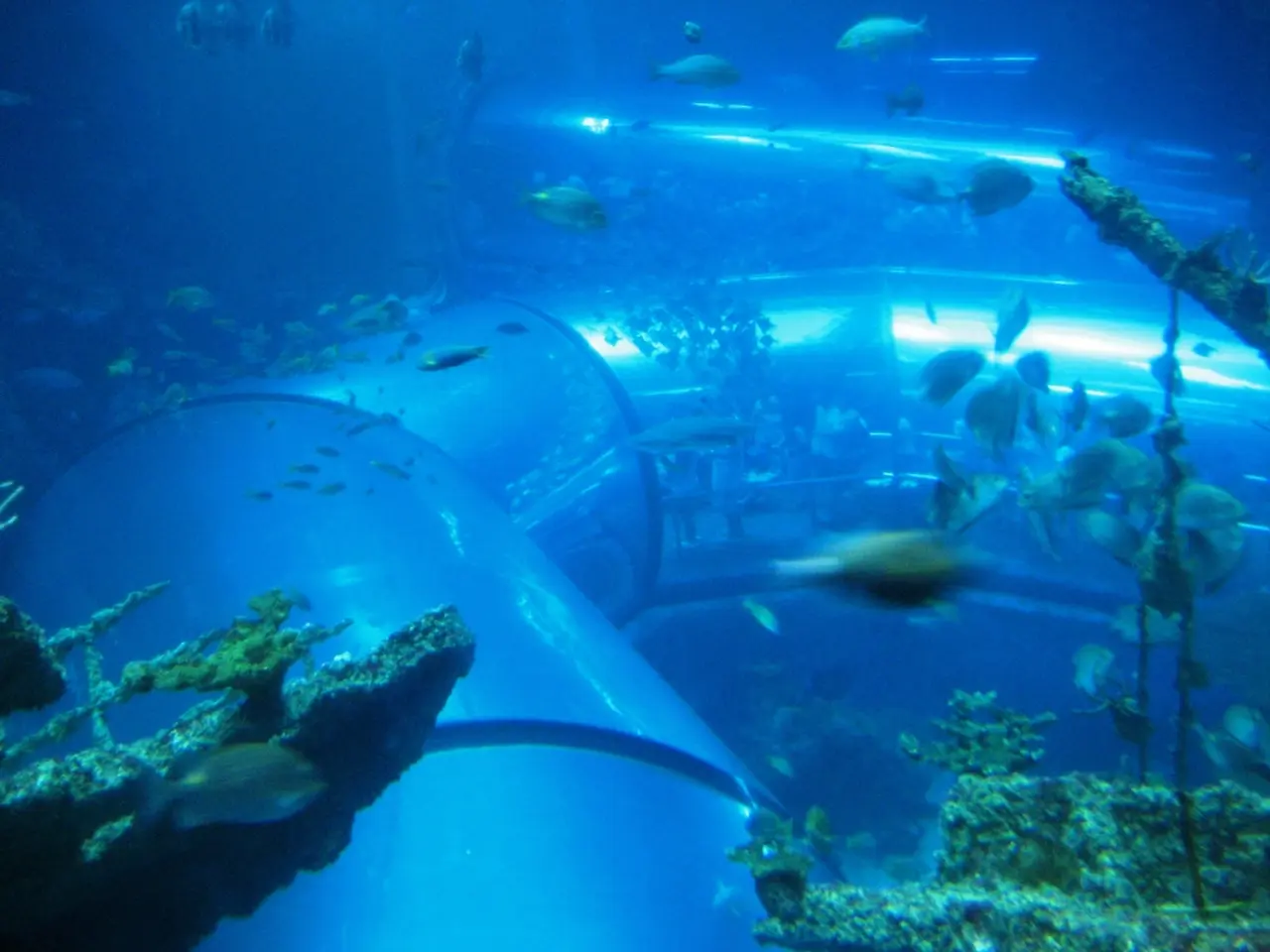Capital Market Dynamics: The Surge of Blue Bonds Gaining Traction
In the quest for a more sustainable future, the marine industry is turning to innovative financing solutions, with blue bonds emerging as a promising avenue. These use-of-proceeds bonds are designed to finance marine and ocean-based projects, contributing to the relevant Sustainable Development Goals (SDGs).
The blue bond market is poised for growth, given the blue economy's anticipated doubling in size to US$3 trillion by 2030, creating 40 million jobs. Blue bonds, considered a sub-type of green or ESG (Environmental, Social, and Governance) bonds, are typically used for large-scale infrastructure projects, such as maritime transportation and marine renewable energy.
Issuers of blue bonds are encouraged to develop a framework that sets a "blue baseline", with clear targets and sustainability performance metrics. This contributes positively to the relevant SDGs, primarily SDG 6 (clean water and sanitation) and SDG 14 (life below water). The International Finance Corporation, ICMA, and the UN Global Compact have provided guidance on issuing blue bonds, extending the pre-existing global market standards for ESG instruments.
The framework should set key performance indicators (KPIs) that are measurable and auditable, contributing positively to the relevant SDG and setting a blue criteria guided by the Ocean Stewardship 2030 report. For a bond to be labelled "blue", the project that is funded must be consistent with the project categories of the International Capital Markets Association's (ICMA) Green Bond Principles (the GBPs).
The key steps for issuing a blue bond, according to United Nations recommendations and best practices, include capacity building, collaboration with technical partners, defining eligible use of proceeds, aligning with standards and guidelines, structuring the bond with outcome-based focus, engaging investors and market participants, implementing impact reporting and accountability, and institutional and regulatory support.
Notable examples of blue bond issuance include debt-for-nature swap structures, where debt is forgiven or reduced in exchange for local environmental conservation measures. Countries like Seychelles, Indonesia, Colombia, Gabon, Belize, and Barbados have utilized this structure to finance blue projects.
Investors in blue bonds include high-net-worth individuals, venture capital firms, and investment banks, recognizing the economic, social, and environmental benefits that blue bonds provide to all stakeholders. As such, blue bonds are seen as a way of addressing the underfunding of SDG 14 (life below water).
The blue economy's growth and the potential of blue bonds to deliver both development additionality and environmental benefits make them an exciting prospect for the future of sustainable marine projects.
Businesses and investors are increasingly recognizing the potential of blue bonds as a means to support the growth of the blue economy while addressing the underfunding of Sustainable Development Goal (SDG) 14 (life below water). These financial instruments, often categorized as ESG (Environmental, Social, and Governance) bonds, are primarily used for large-scale marine infrastructure projects, such as maritime transportation and marine renewable energy. Issuers of blue bonds must adhere to a framework that sets clear sustainability performance metrics, key performance indicators, and a "blue baseline" consistent with international standards and guidelines like the ICMA's Green Bond Principles.




